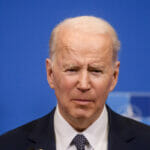China’s National People’s Congress met in March, which seemed like a good backdrop for our annual Templeton Emerging Markets research meeting, which took place the same month in Shanghai, China.
Recently, a government crackdown on so- called “entrusted investments,” which are within the realm of “shadow banking,” caused some market turbulence. However, we think these efforts to effectively force some financial entities to deleverage are overdue.
Nonetheless, China remains one of the fastest-growing economies in the world, and we think rising incomes and the maturation of a young working population is likely to continue driving domestic demand. Moreover, China is gradually becoming less dependent on exports as the government implements structural, economic and financial reforms. China holds the largest foreign reserves in the world, making it less vulnerable to external financial shocks.
There are certainly concerns about the health of China’s economy—including rising debt—so we are mindful of potential volatility and remain watchful for risks. Some of these include changes in Chinese policies, the impact of US President Trump’s trade policy and other economic measures, changes in interest rates and exchange rate transformations.
China’s relationship with the United States has been thrust into an even brighter spotlight in recent days given the new US administration’s focus on trade relations—and in light of increased tensions with China’s neighbor, North Korea.
I’ve invited my colleague Eddie Chow, who is based in Hong Kong, to share some of the key themes we discussed at our research meeting. He provides an overview of China’s economy as well as potential areas of opportunity we see as investors.
Eddie Chow
Senior Executive Vice President
Managing Director
Templeton Emerging Markets Group
China’s economy is in reflationary mode today, which makes us optimistic about the equity market’s prospects. The industrial sector has ended a five-year long period of deflation and we expect to see pick up in restocking and capital expenditures going forward. Stabilization of external demand (better export performance) also would support near-term growth momentum.
China’s economy is experiencing a cyclical upturn with private investments and industrial activities on the rise, and external demand stabilizing.
On the structural side, state-owned enterprise (SOE) reform has yielded positive results, with many companies now seeing stronger cash flows and balance sheet improvement. Supply-side reform is being well implemented, without much drag on the economy. Further implementation of reforms should prove market drivers, in our view.
The government has also been working on various efforts to contain financial systemic risk, including the tightening of regulations on shadow banking activities and closing of “zombie” SOEs.
We think government reforms have been prudent, first taking policy actions to curb property inventories in the lower-tier cities and limiting productions in the coal and steel sectors. SOEs dominate both coal and steel, so execution was relatively easy in those areas. We expect execution could be more challenging in other industries, including cement, ship-building and flat glass, which have a higher degree of private sector participation. In our view, SOE reform should continue with the objective of introducing more professional management and the removal of all unfair competitive advantages which SOEs currently enjoy.
We also think the government should continue to expand fiscal support through tax cuts and higher spending to alleviate negative impacts of supply-side reform on employment and economic growth.
Reform is not only about cutting overcapacity, however. It also needs to increase efficient supply. The government has urged the development of new industries and has promoted innovation. China also faces supply shortages in several areas such as health care services and high-end manufacturing. Infrastructure is also lacking in some areas of the country, especially in the western and rural parts of China. We think such supply expansion will need to be done carefully to avoid new overcapacity issues.
In April, Chinese equities tumbled after Chinese regulators shined a spotlight on “entrusted investments,” which underpin wealth-management products. These products have been an important part of China’s shadow banking system, wherein Chinese banks essentially entrusted outside money managers to invest their assets in sometimes risky investments, in an effort to boost returns.
Tightening of liquidity and further tightening of regulations on shadow banking activities could continue to restrain or cap China’s domestic market. While these sorts of efforts can cause strong market reactions in the short-term, ultimately, efforts to reduce risk should help prevent even bigger shocks down the road.
We remain positive over the long term and believe China still has tremendous growth potential. In addition to SOE and capital-market reforms, the government is addressing many key structural issues, including rebalancing from an export- to service-driven economy, moving toward more value-added manufacturing and ending the one-child policy.
With tightening of regulations, market-wide share suspension is now less a risk. Structurally, China’s A-share market has also become more attractive to foreign investors. The Shenzhen-Hong Kong Stock Connect and Shanghai-Hong Kong Stock Connect programs have made it easier to access the market.
We could see even broader access, should index provider MSCI decide to include Chinese A-shares into its Emerging Markets Index. While MSCI had rejected the inclusion for several years, a decision is expected in June. If approved, this development should bring more participants, along with greater investor flows.
Of course, there are risks. These include an overly tightened liquidity environment as a result of capital outflow and the unwinding of wealth-management products amid the aforementioned regulatory efforts. A rise in global protectionism could also impact trade growth. Changes to US trade policies, faster-than-expected US interest-rate hikes and thus a very strong US dollar also bear watching. Rising political tensions could also cause many investors to avoid risk-assets, including Chinese equities.
Targeting China Trade
US President Donald Trump has been in office for only a short time, and his policy toward China is still relatively unknown and seems to be evolving. Trump was initially shadowing particularly strong trade grievances against Mexico and China during his campaign, with a punitive proposal that would slap a 45% tariff on Chinese imports. However, since sworn in, his protectionist policy rhetoric has shifted more broadly.
In addition, US Secretary of Commerce Wilbur Ross has advocated strongly for rewriting trade deals and has argued against trade wars.
Meanwhile, Trump had also threatened to label China a currency manipulator, but has also recently backed down on such rhetoric.
Some observers argue the US could target sectors where the US trade deficit with China is very large, such as areas including telecom equipment and automatic data processing. However, taking action against certain types of imports may hurt China, but not help create jobs in the United States, in our view.
What We’re Watching Longer Term
In the next 12 months, there a few key events we will be watching that are likely to impact China’s stock market. The 19th National Congress of the Communist Party of China takes place in October/November 2017, and will be the political reshuffle that happens once every five years. The party congress will make changes to the composition of the Politburo and its Standing Committee. It will be key to watch the composition of new leadership to get ideas on the policy direction in the next five years. President Xi may reset his various targets on domestic issues and reassess his strategic direction in various international affairs, including the US-China relationship.
We will also be watching US developments and policy in regard to China closely. The US-China Strategic and Economic Dialogue (to be held in June/July 2017) could provide a good opportunity for both leaderships to bridge the communication gap and resolve trade frictions. We are also watching for any actions against Mexico as a harbinger for China-US trade relations.
Recent dialogue between Xi and Trump seem to be positive in terms of their bilateral relationship. Trump has stated his commitment to honor the “One China” policy while Xi has proposed mutually beneficial cooperation in areas such as trade, energy, infrastructure and investment, which to us suggests reduced risk of a full-blown trade war between the two nations.
In an optimistic scenario, we think a sensible approach from both the United States and China in continuing to deal with trade issues together could prove positive for the Chinese stock market and remove concerns related to trade risks. Combined with a gradually recovering external environment, we think market valuations can recover with more solid support.
The comments, opinions and analyses presented herein are for informational purposes only and should not be considered individual investment advice or recommendations to invest in any security or to adopt any investment strategy. Because market and economic conditions are subject to rapid change, comments, opinions and analyses are rendered as of the date of the posting and may change without notice. The material is not intended as a complete analysis of every material fact regarding any country, region, market, industry, investment or strategy.
Important Legal Information
All investments involve risks, including the possible loss of principal. Investments in foreign securities involve special risks including currency fluctuations, economic instability and political developments. Investments in emerging markets, of which frontier markets are a subset, involve heightened risks related to the same factors, in addition to those associated with these markets’ smaller size, lesser liquidity and lack of established legal, political, business and social frameworks to support securities markets. Because these frameworks are typically even less developed in frontier markets, as well as various factors including the increased potential for extreme price volatility, illiquidity, trade barriers and exchange controls, the risks associated with emerging markets are magnified in frontier markets. Stock prices fluctuate, sometimes rapidly and dramatically, due to factors affecting individual companies, particular industries or sectors, or general market conditions.
Article by Mark Mobius, Franklin Templeton Investments











